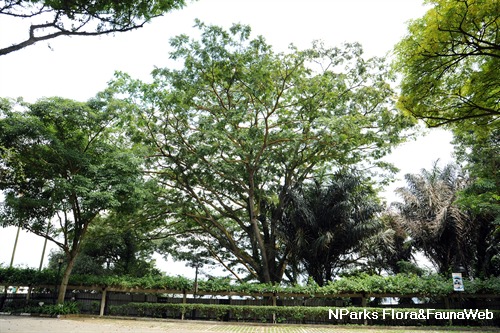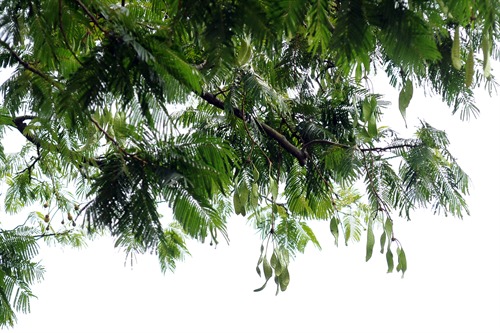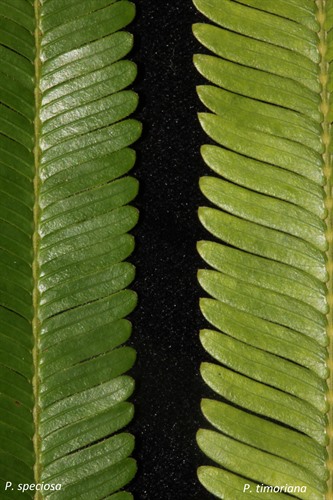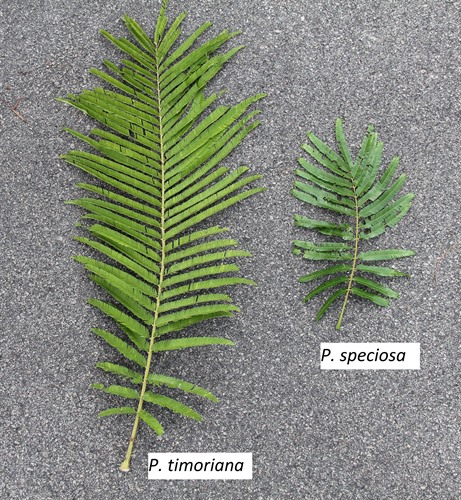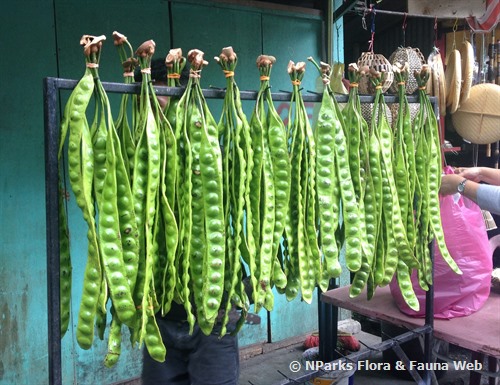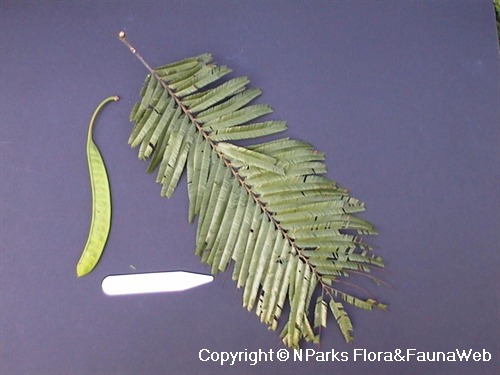
Back
Parkia timoriana (DC.) Merr.
| Family Name: | Fabaceae (Leguminosae) |
| Synonyms: | Inga timoriana DC. |
| Common Name: | Petai Kerayong, Petai Keruyung, Kedawong, Kerayong |
Name
Classifications and Characteristics
| Plant Division | Angiosperms (Flowering Seed Plants) (Dicotyledon) |
|---|---|
| Plant Growth Form | Tree |
| Lifespan (in Singapore) | Perennial |
| Mode of Nutrition | Autotrophic |
| Plant Shape | Umbrella |
| Maximum Height | 50 m |
Biogeography
| Native Distribution | India to New Guinea. |
|---|---|
| Native Habitat | Terrestrial (Primary Rainforest, Mountain, Secondary Rainforest, Monsoon Forest) |
| Preferred Climate Zone | Tropical, Sub-Tropical / Monsoonal |
| Local Conservation Status | Non-native |
Description and Ethnobotany
| Growth Form | It is a tree, up to 50 m tall. |
|---|---|
| Foliage | Its alternate, bipinnate leaves bear numerous small leaflets on it. |
| Flowers | Its flowers are about 2 mm in diameter, borne on a stalked pear-shaped inflorescence. |
| Fruit | Its fruits are green pods that contain numerous seeds, about 27 cm long. |
| Habitat | It grows in lowland forests, along hillsides and ridges. |
| Cultivation | It can be propagated by seed. |
| Ethnobotanical Uses | Cultural / Religious: Heritage Tree : There are currently two individuals of Parkia timoriana listed as Heritage Trees in Singapore. To find out more about these trees, please visit the Heritage Tree Register. |
Fauna, Pollination and Dispersal
| Pollination Method(s) | Biotic (Fauna) |
|---|
Plant Care and Propagation
| Light Preference | Full Sun |
|---|---|
| Water Preference | Moderate Water |
| Plant Growth Rate | Moderate |
Foliar
| Mature Foliage Colour(s) | Green |
|---|---|
| Leaf Area Index (LAI) for Green Plot Ratio | 2.5 (Tree - Open Canopy) |
Image Repository
Others
| Master ID | 1760 |
|---|---|
| Species ID | 3053 |
| Flora Disclaimer | The information in this website has been compiled from reliable sources, such as reference works on medicinal plants. It is not a substitute for medical advice or treatment and NParks does not purport to provide any medical advice. Readers should always consult his/her physician before using or consuming a plant for medicinal purposes. |


